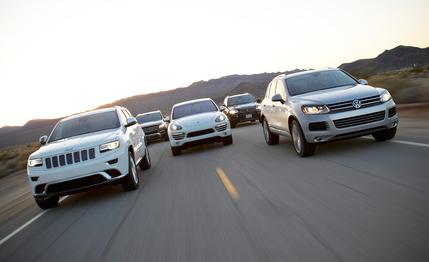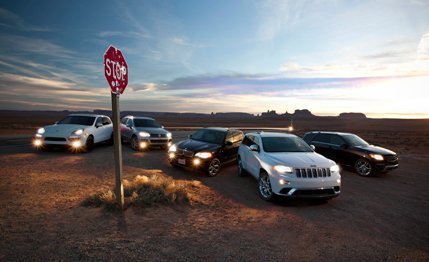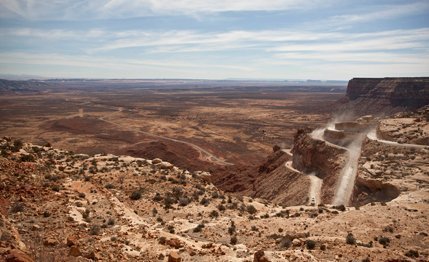
 Comparison Tests
Comparison Tests
All this talk about diesels remains largely just yammer. Despite years of automaker promises and auto-show oaths, plus hipster queues at Volkswagen dealerships for Jetta wagons with stick shifts and 500-mile ranges, the American diesel market is barely running at a cold idle. In fact, this gathering of five vehicles is an all-inclusive roundup of every single entry in the most hotly contested compression-ignition segment in the U.S.: diesel sport-utilities sized medium-large and priced medium-ridiculous. Even the working-pickup market can boast only three diesel players at present.
More oil-burners are surely coming, especially from Europe. There, diesel-evangelical automakers are desperate to amortize their increasing development costs by spreading the religion beyond the E.U. With its scant appetite for diesels, Asia is lost. So the push is in America, which is why, in this test, you must witness the spectacle of four Germans beating up on a lone American (albeit one with an Italian engine).


A diesel’s key selling point is its efficiency. In this test we have fuel tanks sized from 22.5 to 27.7 gallons and EPA-combined fuel-economy ratings in the low- to mid-20s. Thus, even the BMW X5 xDrive35d, with both the most convoluted name and the smallest tank, should be capable of easily leaping from New York to Cleveland without a fill-up. And if you’re very easy on the Mercedes-Benz ML350 BlueTec, which has the largest tank, you might just squeak it all the way to Chicago.
None of those bladder-busting drives particularly interested us, so we saddled up in Los Angeles and drove to Monument Valley, one of the iconic landscapes by which America defines itself with postcard snapshots. That’s 642 miles via a long highway route through Arizona. Instead, we zigzagged across Utah’s Grand-Staircase Escalante, where Mother Nature went crazy with her construction toys, digging canyons of khaki and pink stone and cutting stairs in which each riser is a thousand-foot wall. We drove past Fifty Mile Mountain and the Studhorse Peaks, crossed the Waterpocket Fold, and took pictures at Bullfrog Bay. At 1150 miles, our fuel-economy log may be a record for a C/D comparison test. [Actually, the record is 2000 miles–Ed.]


Along the way, we discovered arguments both for and against the return of diesels. The pros are obvious: huge torque and mid-20s fuel economy for a collection of trucks all weighing over 5000 pounds. On the other hand, even these hyper-modern, next-generation diesels still sound like, as our British photographer drolly put it, “skeletons wanking in a metal filing cabinet.”
And some of the pumps we had to fill up at looked as if they had once been parking cones at a truck-driving school, all oily and battered and stuck out behind the station where their leaky nozzles could secretly drip-drip black slicks into the dust. Even the nicest ones at well-lit megaplazas had sheens of stinky stuff on the handles, something they often forget to mention as you’re signing the papers on a $70,000 vehicle.
Then there were the larger, high-flow big-rig nozzles that didn’t fit—or fit only with the help of an adapter, which was only supplied with the BMW. We had to pass it around, making some fuel stops seem longer than Seth MacFarlane’s monologue at the Oscars. That is, when we could find a station with diesel.
As of this moment, the diesel is something of a BlackBerry in an iPhone world, so owners should be prepared for a dose of inconvenience with their extraordinary fuel economy. Is it worth it? Let’s find out.